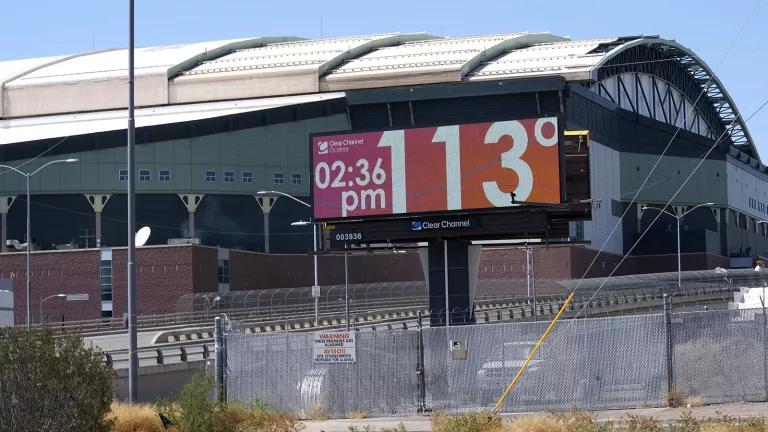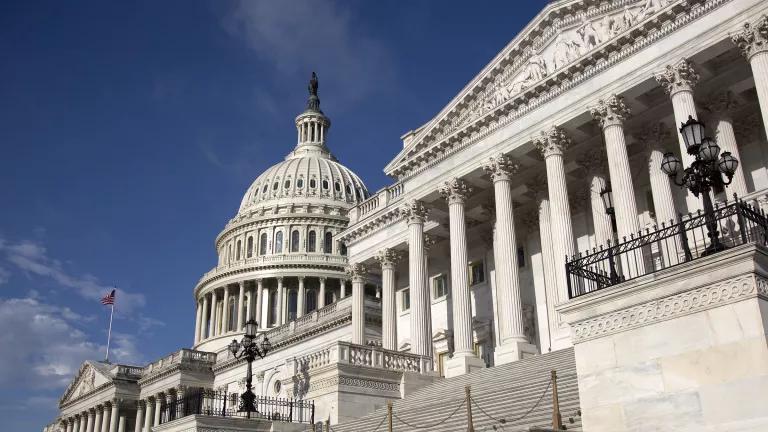5G Coming to Your Neighborhood?
UPDATED: June 10, 2020
Here's What You Need to Know
The next generation of wireless technology—5G—is dramatically different from previous versions. The 5G technology will enable more data to be carried more quickly, but in many places relies on higher frequencies of the electromagnetic spectrum. As a result, its signal does not travel as far requiring the construction of thousands of new cells to repeat the wireless signals to make 5G work. As companies like AT&T, Verizon and T-Mobile construct these new small cell wireless facilities in communities across the country, citizens are organizing to ensure this infrastructure is built in a way that protects their health and quality of life. As communities face a flood of applications for this new wireless infrastructure, many want to know what laws and regulations govern 5G. Here’s some information that may help.
Q: Who is responsible for setting health standards for new cell towers and other wireless infrastructure?
A: The Federal Communications Commission is responsible for setting health standards for radio frequency emissions. As long as proposed wireless service facilities comply with the FCC’s radio frequency standards, federal law prohibits state and local governments from regulating them based on “the environmental effects of radio frequency emissions.” 47 USC § 332(c)(7)(iv).
Q: What are the current FCC standards and are they adequate?
A: The FCC has set limits for radio frequency emissions, with specific limits for occupational exposure and general population exposure. These limits are found in the FCC’s regulations at 47 C.F.R. § 1.1301.
Unfortunately, the FCC has not updated its guidelines since 1996. Based on 30-year-old studies, today’s FCC limits are still primarily designed to protect against high intensity, acute short-term exposures that could result in gross tissue heating effects. Since then, extensive research has raised concerns about other serious health effects below the thresholds set by the FCC. Scientific studies have also raised concern about harm to the wildlife and plant life around us. The FCC initiated a review of its limits in 2013, but failed to address the concerns raised by numerous comments including hundreds of peer-reviewed studies. On December 4, the FCC issued an order ending its inquiry into the adequacy of its radio frequency exposure limits without changing the limits.
Q: What can local governments do?
A: Local governments can condition approval for new 5G cell construction upon compliance with federal requirements for environmental review. While a local government cannot add new requirements for environmental review, it can require proof that the necessary federal review has been done. Given the mounting evidence that the FCC’s radio frequency limits are inadequate, such federal review should include an evaluation of the adequacy of these limits.
Q: What are the requirements for environmental review of new wireless infrastructure?
A: The National Environmental Policy Act (NEPA) requires an analysis of environmental impacts of major federal actions. Such actions include various types of federal approvals including for pipelines, oil and gas wells, dams and wireless infrastructure. If the impacts might be significant, the agency must prepare an Environmental Impact Statement. If an agency is unsure whether the impacts may be significant, it can prepare a shorter Environmental Assessment. Based on the Environmental Assessment, the agency will either move forward to prepare an EIS or instead prepare a Finding of No Significant Impact (FONSI). The only way to avoid an EA or an EIS is if the action qualifies for a categorical exclusion. While some new cell construction may qualify for a categorical exclusion (CE), the FCC has identified circumstances where a CE does not apply. For more information on the difference between an EIS and an EA, as well as information on the use and limits of categorical exclusions, see The Citizen’s Guide to the National Environmental Policy Act prepared by the White House Council on Environmental Quality.
Anyone wishing to construct a facility that uses an FCC license must submit an Environmental Assessment to the FCC or certification that the facility is categorically excluded. 47 C.F.R. § 1.1307. An Environmental Assessment is required if the proposed construction:
- Will be in a wilderness area or wildlife preserve (generally on federal land);
- Might affect threatened and endangered species or their habitat (Endangered Species Act);
- Might affect properties included or eligible for inclusion in the National Register of Historic Places or Indian religious and cultural sites;
- Will be in a flood plain;
- Will involve “significant changes in surface features” during construction (e.g., wetlands, water diversion, deforestation);
- Will be taller than 450 feet and so might affect migratory birds;
- Involves high intensity lighting in a residential area; or
- Would cause radio frequency emission exposure in excess of FCC-established limits.
A company seeking to build a wireless facility that falls into any of the above categories must obtain a Finding of No Significant Impact before building. “Building without following the requirements at 47 CFR 1.1301-1.1319 can constitute a violation of FCC rules and subject the constructing party to potential enforcement action,” the FCC said in its fact sheet on this topic.
Even when these conditions do not apply, the public can request and the FCC can order environmental review.
Q: What was the effect of NRDC’s lawsuit against the FCC regarding the siting of small cell wireless construction?
A: In March 2018, the FCC issued an order that attempted to eliminate environmental review requirements for small cell wireless facilities. NRDC challenged this order in court along with various other groups including the 19 Indian nations, the National Trust for Historic Preservation and the National Association of Tribal Historic Preservation Officers. While some of the construction might be called “small,” it can include new cell towers.
In August 2019, the U.S. Court of the Appeals for the District of Columbia struck down the FCC’s elimination of review under NEPA and the National Historic Preservation Act. No one appealed the decision to the U.S. Supreme Court. As a result, companies must comply with the environmental review requirements (listed above) that existed prior to the FCC’s order attempting to eliminate them.
As a result, companies wishing to construct new small cell wireless facilities must complete an Environmental Assessment or certify that the proposed facility is categorically excluded from review. Construction cannot proceed without such documentation.
Q: Where can I find out more about the environmental review requirements for new cell towers and other wireless infrastructure?
A: The FCC’s Wireless Telecommunications Bureau develops and executes policies and procedures for fast, fair licensing of all wireless services, from fixed microwave links to amateur radio to mobile broadband services. This bureau has developed various materials explaining the environmental reviews required for various types of wireless infrastructure.
Q: Is NRDC monitoring the effects of 5G on human health or the environment?
A: No. NRDC’s work is focused on protecting the right of each of us to have a say in government decisions that affect our lives and communities. We are not monitoring the effects of 5G on human health or the environment. Instead, we are working to hold the FCC accountable to its obligations under NEPA to ensure that the environmental effects of the activities it licenses are adequately evaluated and addressed.
Q: What groups are working on the health impacts of 5G?
A: Numerous citizen groups have organized across the country to address the impacts of 5G deployment. These groups include: Napa/Sonoma Neighborhood Association - CA; Our Town, Our Choice - San Francisco, CA; Stop 5G Bellingham - Bellingham, WA; Stop 5G Chicago - Chicago, IL; Safe Tech Forward - Detroit, MI; Pima County 5G Awareness Coalition - Tucson, AZ; Stop 5G Charlotte - Charlotte, NC; 5G Colorado Action - Denver, CO; ElectromagneticHealth.org - Boulder, CO. More than 100 groups aligned behind a set of principles regarding the implementation of new communications technologies have created a voluntary association, Americans for Responsible Technology.
The Environmental Health Trust collects information and helps bring this information to the attention of federal, state and local decision-makers. EHT carries out research, as well as providing policy and public educational materials.
Physicians for Safe Technology is another useful source of information.
Resources
For more information regarding what local governments can and cannot do related to construction of new small cell wireless infrastructure:
Grant Wilson, Policy Report – Small Cell Facilities in Boulder, CO: Planning Ahead for an Evolving Legal Regime (June 4, 2019). This analysis includes examples of what various local governments have done to regulate small cell wireless facilities.
For a collection of research and articles related to Electromagnetic Radiation Safety:
Dr. Joel Moskowitz, Electromagnetic Radiation Safety.
Award-winning journalist Blake Levitt has collected reliable information on the regulatory oversight and scientific analysis related to the environmental impacts of wireless technology.



